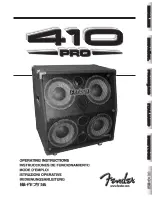
80
Chapter 2 Using Rhythm Performance
8.
To store the Rhythm in User memory, touch <OK>.
The saving of the rhythm to User memory begins.
Once the Rhythm has been accommodated in memory, the Rhythm screen
will reappear.
Restoring the Rhythm Stored in the
User Memory to Their Original Factory
Settings
Use the following procedure to restore only the rhythm stored in the User
Memory to their factory settings.
1.
Touch <Rhythm> on the Main screen.
2.
Touch <
> (Utility) on the Rhythm screen.
fig.02-22_55
3.
Touch <Reset User> on the Sub-window.
The confirmation message appears on the screen.
4.
Touch <OK>.
The Rhythm that had been stored in the User Memory button will return to
the factory settings.
NOTE
Never remove the disk or
turn off the power while
the Rhythm data is being
loaded from disk into the
AT-90SL. If you do so, the
Rhythm data will not be
loaded into the AT-90SL,
and malfunctions could
result. After returning the
Rhythm stored in the
[Disk/User] button to the
factory settings (see
following section), re-
load the Rhythm from
disk
.
To restore all of the factory
settings, use the Factory
Reset operation (p. 22).
You can restore the User
Memory to the factory
settings by using the
following method.
1. Press the [Power On]
button to turn off the
power.
2. Hold down the Rhythm
[Disk/User] button, and
press the [Power On]
button.
Never turn off the
power while the
following screen is
displayed.
fig.02-27_70
The Rhythm that had
been stored in the User
Memory will return to
the factory settings.
Min
Max
Min
Max
Min
Max
Min
Max
Harmony Intelligence
AT-90SL_e.book 80 ページ 2004年9月8日 水曜日 午後5時44分
Summary of Contents for Atelier AT-90SL
Page 1: ...04 9 3N 03676678...
Page 263: ...262 MEMO AT 90SL_e book 262...
Page 266: ...04 9 3N 03676678...
















































